U.S. Army Corps of Engineers Will Not Proceed with Proposed Floodwall at Belle Haven
In 2022, the U.S. Army Corps of Engineers (USACE) proposed to build a six- to seven-foot-high wall just west of the George Washington Memorial Parkway. In April 2024, the USACE, in a 284-page fina environmental assessment, announced that the Corps will not go forward with the proposed Belle Haven floodwall at this time. You can read the Final Integrated Feasibility Report and Environmental Assessment here. For more details and FODM’s views, click here.
NPS Regulations Prohibit Jet Skis in Dyke Marsh
 |
| Photo by Lake Mead National Recreation Area - Andrew Cattoir |
After receiving reports of jet skis operating in Dyke Marsh, on November 11, 2023, FODM asked GWMP Superintendent Charles Cuvelier to take some steps to make the public and the Belle Haven Marina managers aware of the National Park Service (NPS) regulatory prohibition against jet skis.
Superintendent Cuvelier responded on April 22, 2024, and advised us that he notified the Belle Haven Marina concessioner that NPS regulations at 36 CFR 3.9 prohibit jet skis and other personal watercraft in the Dyke Marsh Wildlife Preserve.
The regulation at 36 CFR 1.4 defines “personal watercraft” in part as “a vessel, usually less than 16 feet in length, which uses an inboard, internal combustion engine powering a water jet pump as its primary source of propulsion. The vessel is intended to be operated by a person or persons sitting, standing or kneeling on the vessel, rather than within the confines of the hull.” You can read the regulations, 36 CFR 3.9, at https://www.ecfr.gov/current/title-36/chapter-I/part-3/section-3.9.
Below we share the superintendent’s April 22 response letter to the FODM, along with the park’s notice to the concessioner and map of Dyke Marsh.
GWMP acted after we contacted them because several people observed personal watercraft operating in Dyke Marsh. We believe that these watercraft negatively impact wildlife and likely disturbed ospreys that nested near the boat ramp in 2023. Jet skis also impair vegetation and other natural resources and disturb park visitors. While we expect that the marina concessioner will comply with the GWMP’s notice and not allow jet skis to be launched at the boat ramp, neither the concessioner nor the FODM enforces NPS regulations. The U.S. Park Police have the authority to enforce this regulation.
If anyone observes jet skis being launched or operating in Dyke Marsh, we request that you take a photograph and immediately contact the U.S. Park Police at 703‑285‑1000. Ideally you should send the photograph to the Park Police, to Lt. Timothy Wallace (timothy_
The Superintendent's response letter to FODM and be viewed here.
On October 23, 2023, the Friends of Dyke Marsh commented on the July 2023 Assessment of Effects Report, George Washington Memorial Parkway “South Section and Mount Vernon Trail Improvements Plan/Environmental Assessment.”
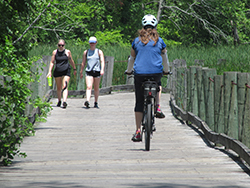 |
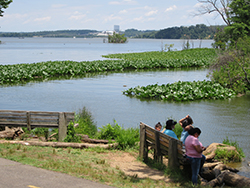 |
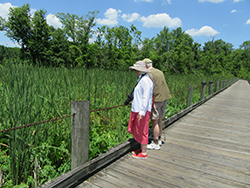 |
||
| Photos by Glenda Booth |
You can view FODM's comments here.
Expressing Concerns about Widening the Mount Vernon Trail
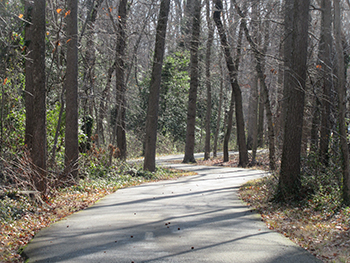 |
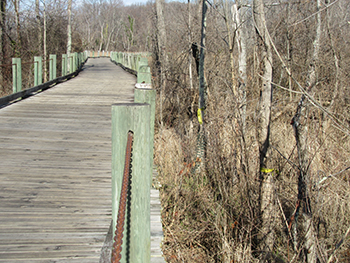 |
|
| Many trees are growing very close to the trail. Photos by Glenda Booth. | The pumpkin ash trees that FODM Is trying to save, here marked with yellow plastic tags, are very close to the trail and bridge 23. | |
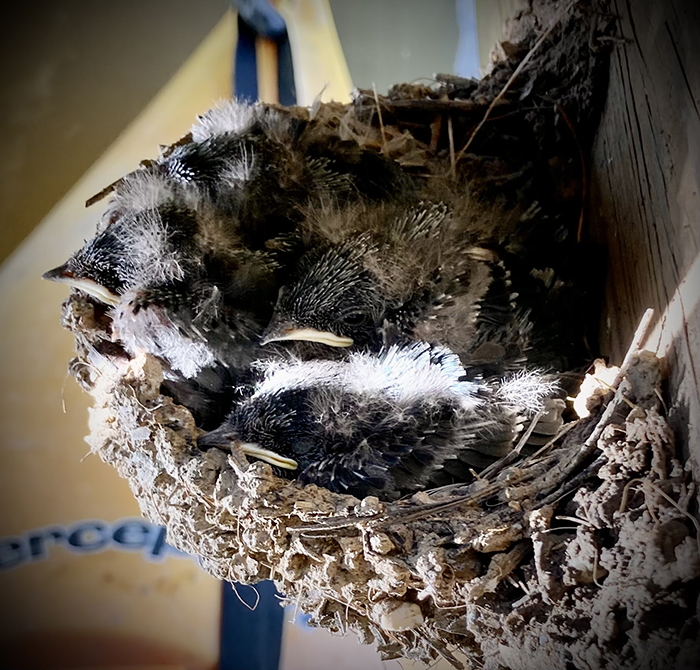 |
| A barn swallow (Hirundo rustica) pair built a nest under bridge 23 and raised at least four young in July and August 2023. Photo by Todd Kiraly |
On August 21, 2023, FODM submitted the following comments to the National Park Service on their July 2023 Asessment of Effects report.
Thank you for the opportunity to provide comments on the July 2023 Assessment of Effects Report, George Washington Memorial Parkway South Section and the Mount Vernon Trail.
We realize that this phase of the plan focuses on impacts on historic and cultural resources. We hope you have reached out to historic preservation officials in Virginia, Fairfax County, Arlington and Alexandria as well as private groups like the Mount Vernon Ladies Association, the American Horticultural Society (River Farm), Mount Vernon Regional Historical Society and the Friends of Fairfax Archaeology and Cultural Resources.
We are pleased that the parkway will not be wider than its current footprint and urge you to maintain its historic character.
We agree with your goal to “not diminish the significance or integrity of the historic property” (page 29). We hope you will consult with FODM on your plans, especially if designs will have adverse environmental impacts.
We filed extensive comments on January 16, 2023, and direct you to those in making your final plans. Our views have not changed. (These comments appear below the next section on this web page.)
We oppose increasing impervious surfaces, harming and destroying mature native trees and native plants; staging construction in the preserve without restoring habitat; and other adverse impacts to an already fragile and diminishing wetland complex.
Our recommendations:
(1) We recommend that you acknowledge (e.g., page 2, page 8, page 19) that the trail is used by many people to observe and study nature; conduct plant, bird and other surveys; host walks; conduct outdoor programs; conduct academic research and other non-recreational purposes. Those uses should be given equal weight in your plans. In describing trail users on page 19, these uses are ignored or omitted.
To base widening the trail on recommendations by American Association of State Highway and Transportation Officials (AASHTO) appears to focus solely on transportation, not the multi-, non-transportation uses we describe above, which are equally and perhaps more important in light of the rarity of the wetlands in the NPS system and challenges in Dyke Marsh, including the decline in biodiversity, native plants, birds, insects and other natural resource degradation.
Naturalists, students, academics, historians and others use the trail, especially bridge 23, for their studies and surveys. It is a prime area for viewing marsh habitat, tidal activity and wildlife.
(2) We question the need to widen the multi-use trail to 10 feet from the current 8 to 9 feet south of Alexandria (page 27) and continue to request a bicycling safety study as we previously recommended. We assume that “safety improvements,” one of the bases of this plan, are supported by documented unsafe conditions. We again ask that you analyze and make publicly available the current state of safe use of the trail by all users, especially bicyclists.
More impervious surface (which your plan acknowledges) can harm and kill trees and other vegetation, introduce more disturbances and invasive plants, increase stormwater runoff, increase human-wildlife conflict, wildlife deaths and further degrade Dyke Marsh.
(3) As expressed on pages 7 and 16, NPS plans to rehabilitate the bridge over Hunting Creek. We believe NPS should consider designs that allow for marsh migration landward, in light of the rising river levels.
(4) We would appreciate more detail on the page 15 statement that NPS will "conduct tree pruning and clear vegetation" at places along the trail. At a minimum, NPS should conduct a thorough tree survey as mentioned on page 27, document what trees are present and avoid further harm to trees and prepare a biological inventory of plants and animals present. The plan should include planting more trees, beyond those impacted by these plans. The parkway is losing many valuable trees. Dyke Marsh alone is losing over 1,000 pumpkin ash trees.
(5) The changes to the Belle Haven marina road appear largely to address crosswalks and the left turn from the parkway into the driveway (pages 9-10). Improving crosswalks and turns off the parkway could make Dyke Marsh visitors’ access more accessible and safer.
(6) On page 15, NPS plans to build a new "comfort station" at Gravelly Point and make amenity improvements along the trail (benches, drinking water, racks for bikes). We continue to urge upgrading the restrooms at Belle Haven Park and make them available in all seasons.
(7) We urge that any drainage and stormwater management changes (pages 28-29) not send more polluted stormwater into Dyke Marsh or the Potomac River. We urge NPS to retain more stormwater onsite and to convince Fairfax County and other jurisdictions to implement measures that retain more stormwater onsite, to prevent it from flowing into the marsh and river. NPS should mitigate any adverse impacts of expanding impervious surfaces.
Since the trail is located in a wetland and floodplain at many points, ponding (page 29) and flooding are inevitable. NPS and trail users should live with it.
Commenting on the U.S. Army Corps of Engineers’ Proposed Belle View Floodwall and Levee, Draft Integrated Feasibility Report and Environmental Assessment (May 2022)
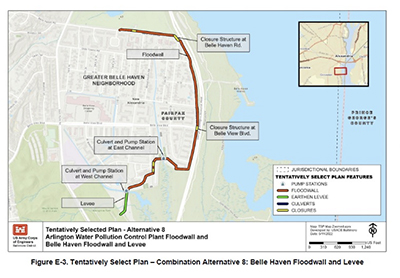
Provided here are the Corps of Engineers Feasibility Report and Environmental Assessment and documents related to comments provided to the U.S. Army Corps of Engineers.
1. U.S. Army Corps of Engineers’ Feasibility Report and Environmental Assessment (Plan)
2. Comments FODM submitted to the Corps
3. FODM summary of all public comments
4. All comments submitted to the Corps
Expressing Concerns about Trail Construction
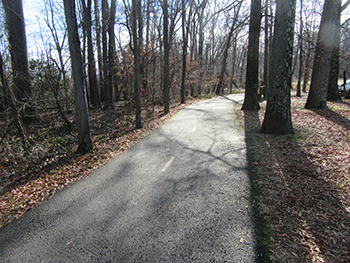 |
 |
|
| Many trees are growing very close to the trail. All photos by Glenda Booth | ||
On December 6, 2022, the George Washington Memorial Parkway (GWM) unit of the National Park Service (NPS) published a proposed plan and environmental assessment to perform some construction on the south GWM Parkway segment and the Mount Vernon Trail. Around 2.5 miles of the trail is in the Dyke Marsh Wildlife Preserve.
On January 16, 2023, FODM submitted the following comments on the NPS’s plans. FODM's January 16 Comments
On January 18, 2023, FODM submitted the following additional comments on the NPS’s plans. FODM's January 18 Comments
The NPS proposal is posted here: https://parkplanning.nps.gov/document.cfm?documentID=124907
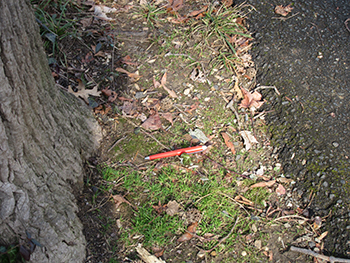 |
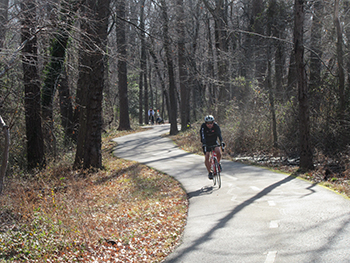 |
|
| The red pen is 5 1/2 inches long, illustrating how close the tree trunk is to the trail. | The multi-use trail attracts many bikers. |
|
 |
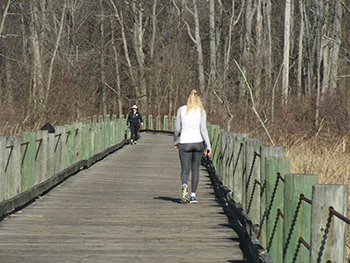 |
|
| The pumpkin ash trees that FODM Is trying to save, here marked with yellow plastic tags, are very close to the trail and bridge 23. | Bridge 23 on the trail and in Dyke Marsh is a favorite spot for nature study. |
Increasing Local Parks’ Resources
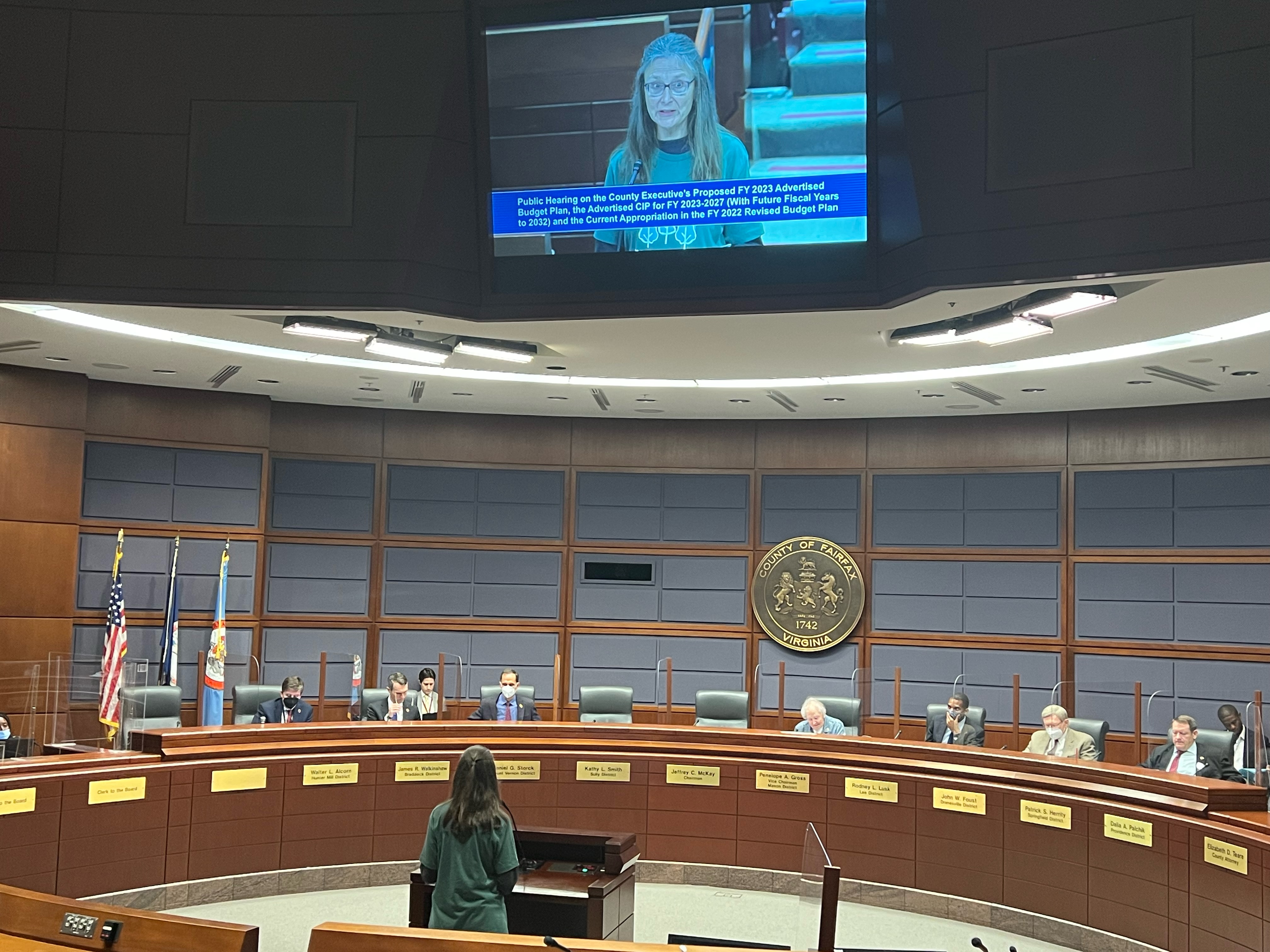 |
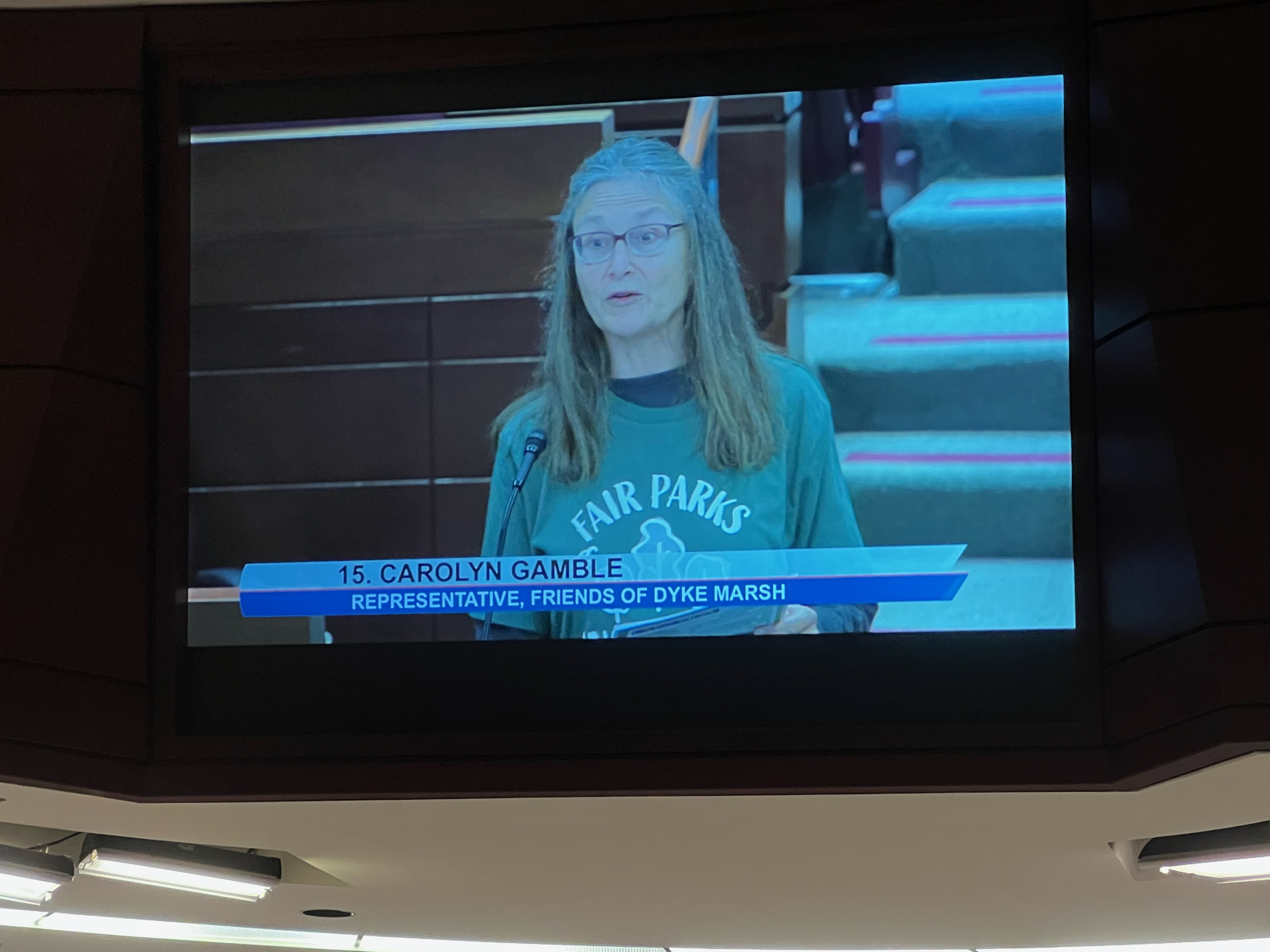 |
||
On April 13, 2022, FODM Board member Carolyn Gamble testified before the Fairfax County Board of Supervisors urging these elected officials to increase funding for local parks in the fiscal year 2023 budget. She explained that county officials’ decisions and what happens in local parks affect the larger environment, including the Dyke Marsh Wildlife Preserve.
To view her statement, click here.
Discouraging Single-use Plastics
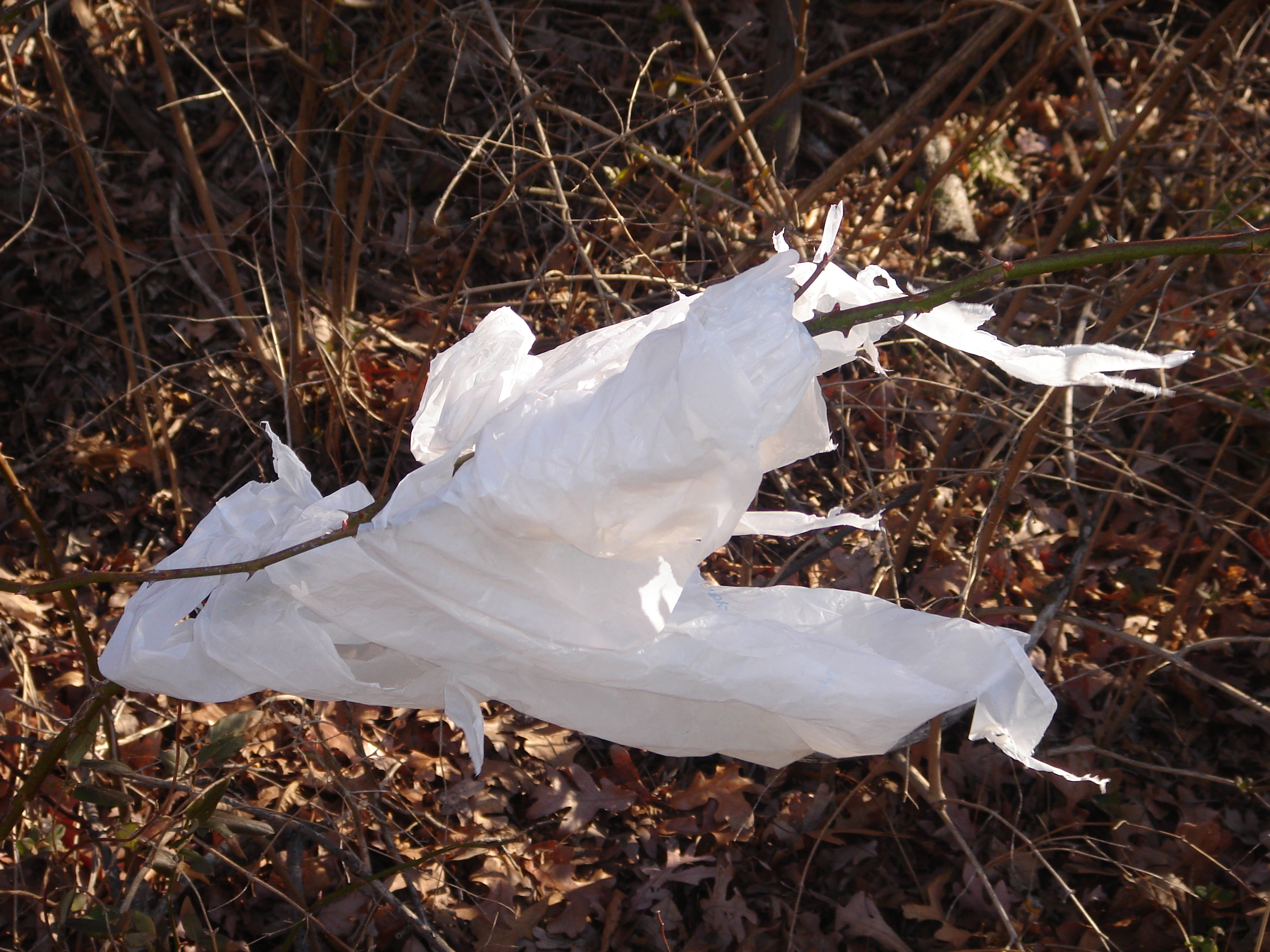
The Friends of Dyke Marsh urge the Board of Supervisors to approve a fee on certain disposable plastic bags, as proposed in the draft ordinance.
The Friends of Dyke Marsh (FODM) is a non-profit 501(c)(3) organization dedicated to preserving, protecting and restoring the Dyke Marsh Wildlife Preserve. Dyke Marsh is a 485-acre freshwater tidal wetland complex in Fairfax County on the Virginia shoreline of the Potomac River. The Potomac River is a major tributary of the Chesapeake Bay. Dyke Marsh is ecologically diverse, offering habitat for 300 known species of plants, 6,000 arthropods, 38 fish, 34 mammals, 16 reptiles, 14 amphibians, over 275 species of birds and at least 20,000 species of insects.
In our numerous trash cleanup events over many years, we have frequently found plastic debris, including plastic bags and plastic bag fragments within the preserve, at Belle Haven Park and along the Potomac shoreline. The standard grocery and convenience store plastic bags are flimsy and intended for single use. We believe that most are not recycled. Even when properly disposed of, for example, placed in a trash receptacle or recycled, this plastic waste can still make its way into woodlands, vegetated areas and local waterways. We have experienced wildlife getting into trash cans searching for food and spreading trash, including plastic bags, all around.
Microplastics Cause Harm
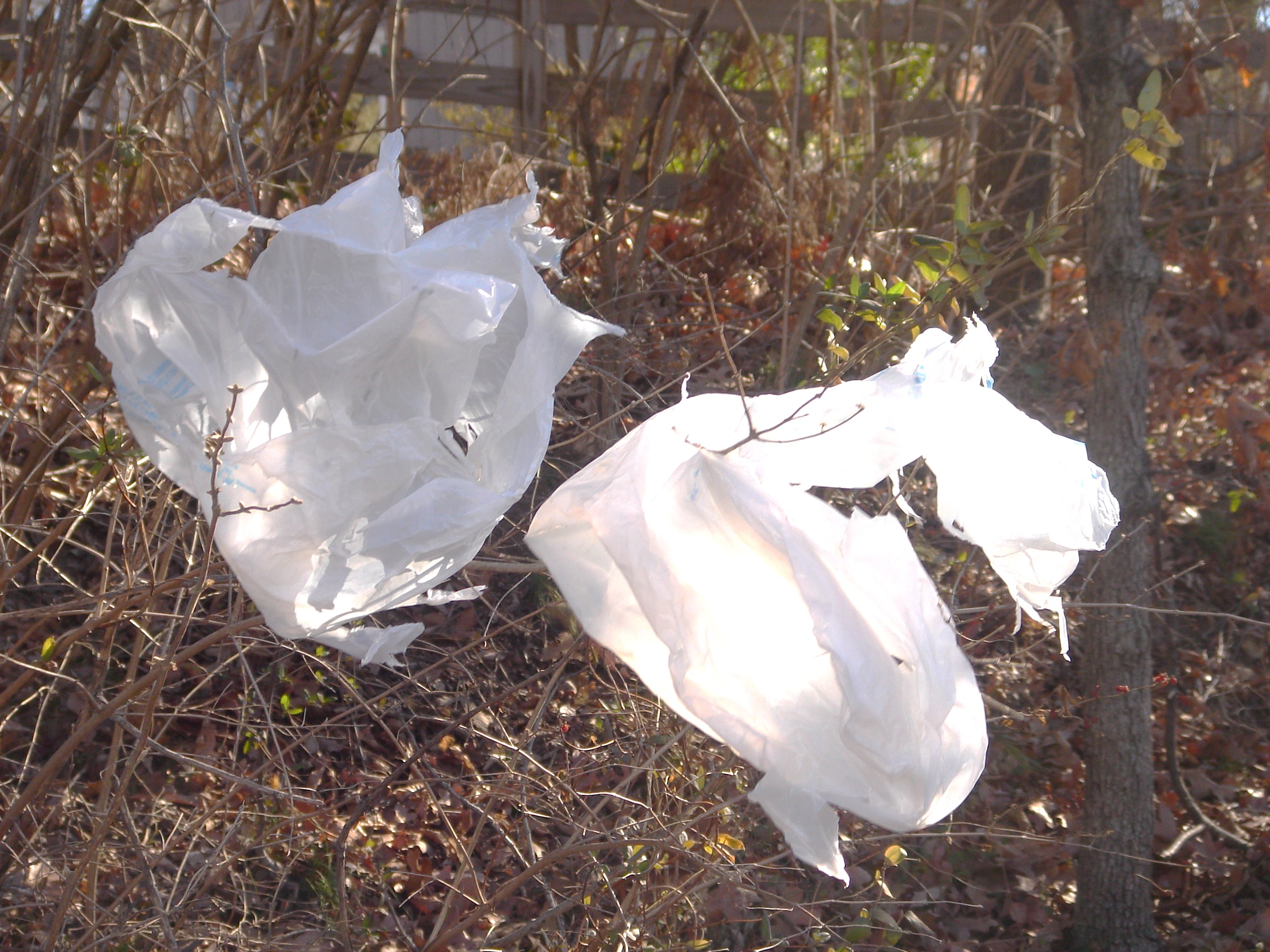
Wildlife, especially birds, turtles and fish, are particularly vulnerable to this plastic pollution. Micro-plastics are frequently ingested by wildlife: birds and fish often mistake them for food or may consume insects and worms that have ingested the plastics. Micro-plastics act as magnets for harmful pollutants and often become laden with chemicals, which are then passed along the food chain from insects and worms to birds and fish and, eventually, to humans.
In addition to the harmful chemicals, we know that when birds ingest these plastics, they can die by starvation because the plastic takes up space in their stomachs and makes the birds feel full of a material that does not break down or provide any nutritional value.
FODM has conducted Dyke Marsh breeding bird surveys for over 27 years, which highlight the presence of plastics and how birds interact with them. During the survey conducted between May and July in 2021, we identified nearly a dozen osprey nests and three bald eagle nests within the preserve. These nests had debris, including plastic bags and bag fragments, in them. Ospreys and their young can get entangled in these plastics, which can result in fatal outcomes.
Reduce Use
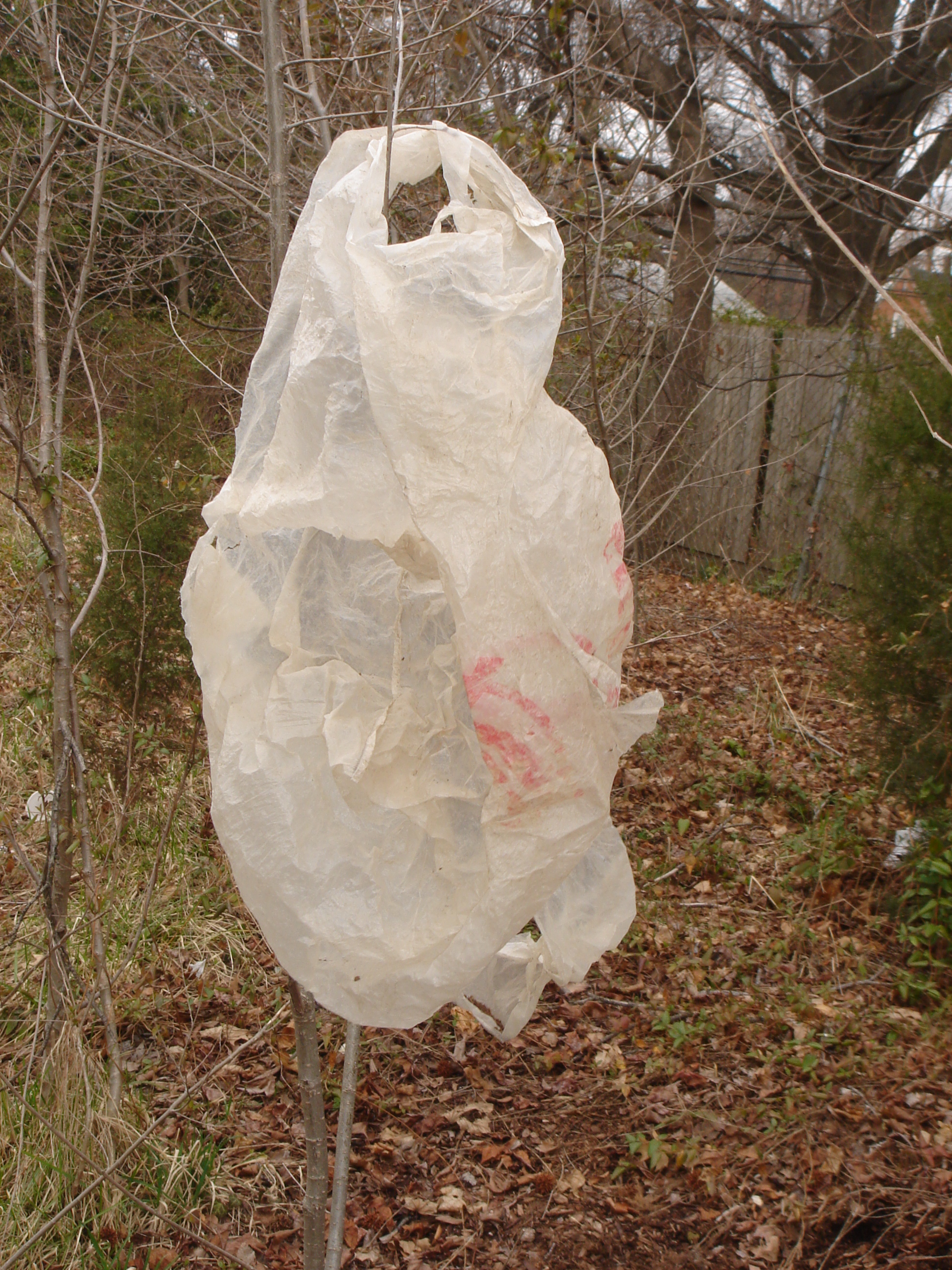
Fees on single-use plastic bags in other localities and states have proven to raise awareness of their harm and to reduce their use and improper disposal. Bag fees in other areas have proven to reduce plastic bag trash, for example, in Washington, D.C.
These policy changes can help shape behavior and raise public awareness through educational and volunteer opportunities that can be funded through the collected revenue.
More Revenue
According to Census.gov and its July 2019 estimate, there are 1,147,532 residents living in Fairfax County. If half of these residents used one plastic bag during weekly trips to the grocery store, this would total 29,835,884 plastic bags used annually within the county – and this is a conservative estimate.
If this fee is enacted and Fairfax County residents still consume 29,835,884 plastic bags during the 2022 calendar year, at a collection rate of $0.03 per plastic bag, the county could receive $895,076.52 in revenue which the county could use to fund litter reduction and anti-littering education programs to increase public awareness of reducing environmental waste and mitigating litter pollution.
As Virginia Governor Ralph Northam has said, “It takes a village to be stewards of our environment and natural resources.” Enacting the proposed disposable plastic bag fee is a critical, necessary and a long overdue step for Fairfax County, our residents and importantly, our natural resources. We believe that Fairfax County’s residents want to be good stewards of the environment and to protect our precious natural resources on which we all depend.
Thank you for the opportunity to present our views and recommendations.
Sources:
- American Bird Conservancy, “Let’s Talk Trash: Plastic Pollution Birds, and Our Oceans” Webinar, conducted 1July 14, 2021 (https://www.youtube.com/watch?v=XsBXQGOsLPk)
- Fairfax County Government, Office of Environmental and Energy Coordination (https://www.fairfaxcounty.gov/environment-energy-coordination/disposable-plastic-bag-tax-faqs)
- Friends of Dyke Marsh (https://fodm.org/),Dyke Marsh Breeding Bird Survey, conducted May to July, 2021 (source: email from compiler, Larry Cartwright)
- National Park Service, Chesapeake Bay (https://www.nps.gov/chba/learn/nature/facts-and-formation.htm)
- Oceana (https://oceana.org/our-campaigns/plastics?utm_medium=email&utm_source=emailblast&omhide=true&utm_campaign=plastics_wbnr_rec&contactdata=0qShMRlWvyRmQJh6udNOR3OuJkGxkFg1NYnxmJe17YkH3JMMuCyonkEcr4Fxe59dzcbMm5%2bF8yJ7e4UcyX8nqw%3d%3d&emci=ac0a0fa8-04e4-eb11-a7ad-501ac57b8fa7&emdi=4e3ee37f-3ee6-eb11-a7ad-501ac57b8fa7&ceid=309865)
- U.S. Census Bureau (https://www.census.gov/quickfacts/fairfaxcountyvirginia)
- Virginia Conservation Network (https://vcnva.org/governor-signs-plastic-reduction-bill/)
- Virginia’s Legislative Information System (https://law.lis.virginia.gov/vacode/58.1-1745/)
- Alice Ferguson Foundation, https://ggwash.org/view/38159/the-data-proves-the-dc-bag-fee-is-working
Stemming the Trash Flood
Trash cans, trash traps, dumpsters and storm drain gutter guards may keep some trash out of Dyke Marsh and our waterways, but the real solution to the never-ending stream of trash is to stop generating it in the first place. On October 19, 2020, Zach Huntington, Clean Streams Program Manager for Clean Fairfax (www.cleanfairfax.org), conducted a briefing on the trash menace and possible solutions.
Solid waste collections are increasing in Northern Virginia. In fact, Fairfax County is the second largest trash collector among local jurisdictions in the United States. Republic, a company that services Fairfax County is the second largest hauler in the U.S. and their national average has increased by 30 percent this year. The county has seen a 40 percent increase in residential trash tonnage since last year and a 30 percent increase in curbside collection since the March 2020 onset of the coronavirus pandemic.
He described several litter prevention legislative solutions, including plastic bag fees, polystyrene bans, increasing litter taxes and extended producer responsibility. You can view the presentation here.
Some bills anticipated in the 2021 Virginia General Assembly are described on the Litter Free Virginia website, https://litterfreeva.org/legislation-tracker/. In addition to FODM, other organizations represented were the Porto Vecchio Waterfront Committee, the Audubon Society of Northern Virginia, Friends of Little Hunting Creek and the Friends of Accotink Creek.
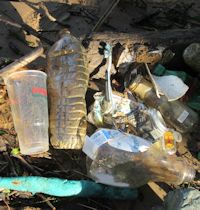 |
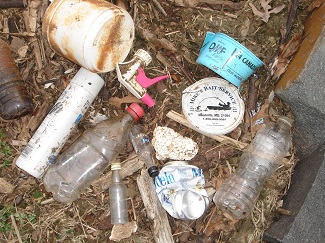 |
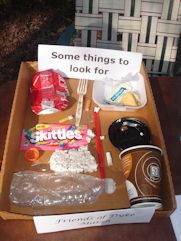 |
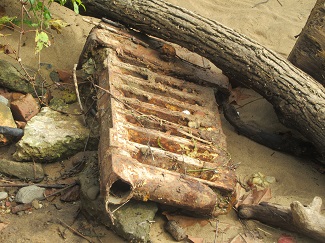 |
FODM Weighed in on GWM Parkway Safety Study
The National Park Service (NPS) is conducting a safety study of the south segment of the George Washington Memorial Parkway. After a July 11, 2019 public meeting, NPS had a public comment period which ended on August 21. FODM submitted the following comments. Read here.
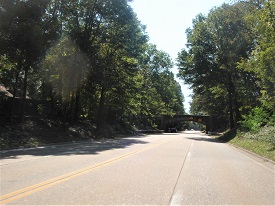 |
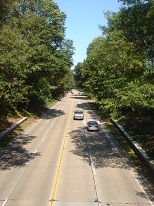 |
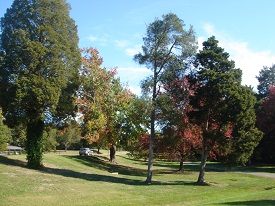 |
 |
FODM on the Future of Claude Moore Farm Park, May 23, 2019
In 2019, the George Washington Memorial Parkway unit of the National Park Service is considering a concept plan for the Claude Moore Farm area of Turkey Run Park. FODM submitted the following comments on May 23, 2019 and stressed the importance of conducting a comprehensive biological inventory of the natural resources there and preserving conservation corridors.
FODM on the Future of Claude Moore Farm Park, October 26, 2019
On October 26, 2019 FODM submitted the following comments on the National Park Service's proposed three concepts for the former Claude Moore Farm area of Turkey Run Park.
Oxon Hill Farm
On June 25, 2019, FODM wrote to the National Park Service’s (NPS) Acting Director, Mr. Dan Smith, and urged NPS not to develop Oxon Hill Cove National Park and Oxon Hill Farm, to preserve its biodiversity and not to trade it for land elsewhere. Read FODM's letter here.
 |
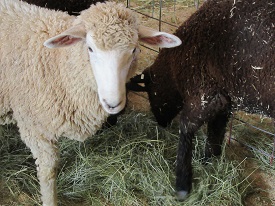 |

